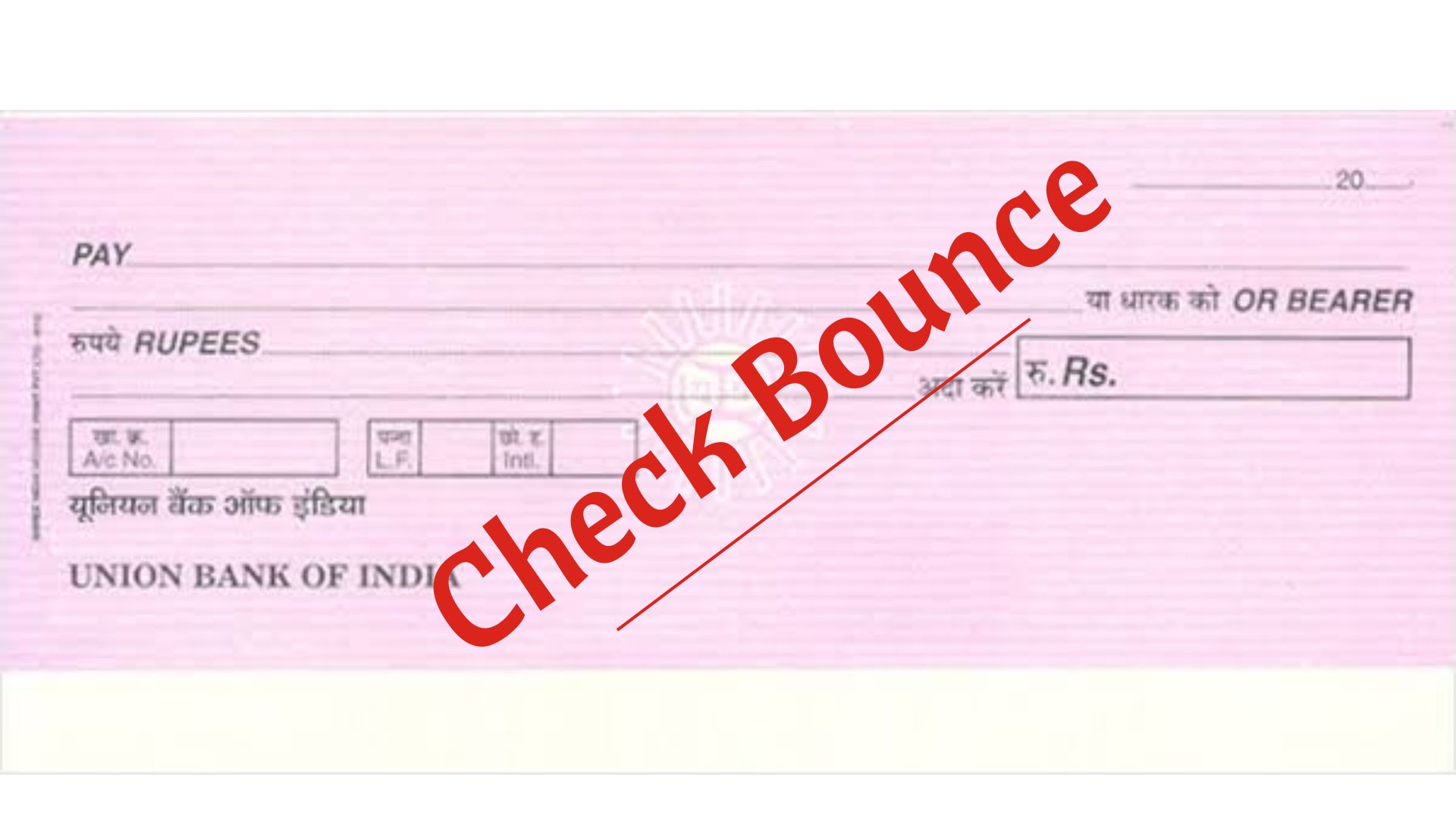In financial transactions, cheques have long been a popular
and widely used method of payment. They provide a convenient and secure way to
transfer funds between parties. However, when a cheque is dishonored due to
insufficient funds or other reasons, it can lead to a series of consequences
for both the issuer and the recipient. Let's delve into what happens if a
cheque bounces and the subsequent steps that may follow.
Understanding Cheque
Bounce:
A cheque bounce, also known as a dishonored cheque, occurs
when the bank refuses to honor the payment mentioned in the cheque due to
various reasons such as insufficient funds, mismatched signatures, or an
invalid account. When this happens, it can have legal, financial, and
reputational implications for both parties involved.
Consequences for the
Issuer:
1.Financial Penalties: The issuer of the bounced cheque
may incur financial penalties imposed by their bank, which can vary depending
on the bank's policies and the severity of the default. These penalties could
include charges for insufficient funds, cheque return fees, and other related
costs.
2.Legal Ramifications: In many jurisdictions, issuing a
bounced cheque is considered a criminal offense and can lead to legal
consequences such as fines and even imprisonment. The severity of these
consequences may vary depending on factors such as the amount involved and the
intent behind issuing the bounced cheque.
3.Damage to Reputation: A bounced cheque can tarnish the
issuer's reputation and credibility, especially in business and financial
circles. It may lead to a loss of trust from creditors, vendors, and other
parties involved in financial transactions.
Consequences for the
Recipient:
1.Financial Loss: When a cheque bounces, the recipient
does not receive the intended payment, leading to financial losses. This can
disrupt cash flow, cause inconvenience, and potentially result in additional
costs such as bank charges for processing the bounced cheque.
2.Legal Recourse: The recipient has the option to take
legal action against the issuer to recover the amount owed. This may involve
initiating civil proceedings or filing a complaint with the appropriate
authorities, depending on the applicable laws and regulations.
3.Reputation Damage: Just as the issuer's reputation may
suffer, the recipient's reputation can also be affected by a bounced cheque,
particularly if it occurs in a business context. It may raise questions about
the recipient's financial stability and reliability in the eyes of other
parties.
Remedies and
Recourse:
1.Communication: In many cases, the best course of action
is open communication between the issuer and the recipient to resolve the
matter amicably. This may involve renegotiating payment terms, arranging
alternative payment methods, or setting up a repayment plan.
2.Legal Action: If communication fails or if the bounced
cheque involves a significant amount of money, the recipient may choose to
pursue legal action to recover the debt. This could include filing a civil
lawsuit or initiating criminal proceedings, depending on the circumstances.
3.Bank Intervention: Recipients can also seek assistance
from their bank to recover the amount owed. Banks may offer services such as
cheque re-presentment or assistance in legal proceedings to help their
customers recover funds from bounced cheques.
What is the Cheque bounce case process?
The process of dealing with a cheque bounce case typically
involves several steps, including legal and administrative procedures. Here's
an overview of what typically happens:
1. Notification of
Bounced Cheque:
When a cheque bounces, the bank notifies the recipient
(payee) of the bounced cheque, stating the reason for dishonor. This
notification may come in the form of a physical return of the bounced cheque or
an electronic message.
2. Communication with
Issuer:
The recipient usually contacts the issuer (drawer) of the
bounced cheque to inform them of the situation. They may request the issuer to
make the payment again or provide an explanation for the dishonor. This initial
communication may be informal and aimed at resolving the issue amicably.
3. Legal Notice:
If the issuer fails to respond or refuses to make payment,
the recipient may choose to send a legal notice demanding payment within a
specified period. The legal notice serves as a formal communication, outlining the
details of the bounced cheque, the amount owed, and the consequences of
non-payment.
4. Waiting Period:
Upon receipt of the legal notice, the issuer typically has a
specified period, usually 15 to 30 days, to settle the payment or respond to
the notice. During this period, negotiations may continue between the parties
to reach a resolution.
5. Filing Complaint:
If the issuer fails to comply with the legal notice and does
not make payment within the specified period, the recipient may proceed to file
a complaint with the appropriate authority. The authority could be a police
station, a magistrate's court, or a specialized court depending on the
jurisdiction and the applicable laws.
6. Investigation:
Upon receiving the complaint, the authorities initiate an
investigation into the cheque bounce case. This may involve verifying the
facts, including the authenticity of the bounced cheque, the reasons for
dishonor, and the efforts made to resolve the matter amicably.
7. Legal Proceedings:
If the investigation confirms the validity of the complaint,
legal proceedings commence against the issuer. The issuer may be summoned to
appear in court to answer the allegations of issuing a bounced cheque. The court
proceedings follow the due process of law, including hearings, evidence
presentation, and legal arguments from both parties.
8. Judgment:
After considering the evidence and arguments presented, the
court delivers its judgment in the cheque bounce case. Depending on the
outcome, the court may order the issuer to pay the amount owed, along with any
applicable penalties, fines, or legal costs. In some cases, the court may also
impose criminal sanctions such as imprisonment for deliberate fraud or repeat
offenses.
9. Enforcement of
Judgment:
If the issuer fails to comply with the court's judgment, the
recipient may take further steps to enforce the judgment. This could involve
seizing assets, garnishing wages, or other legal measures to recover the amount
owed.
Conclusion:
Dealing with a cheque bounce case can be a complex and
time-consuming process involving legal, administrative, and financial
considerations. It underscores the importance of exercising caution when
issuing cheques and resolving disputes through proper channels, including
negotiation, legal notice, and judicial recourse, if necessary.

